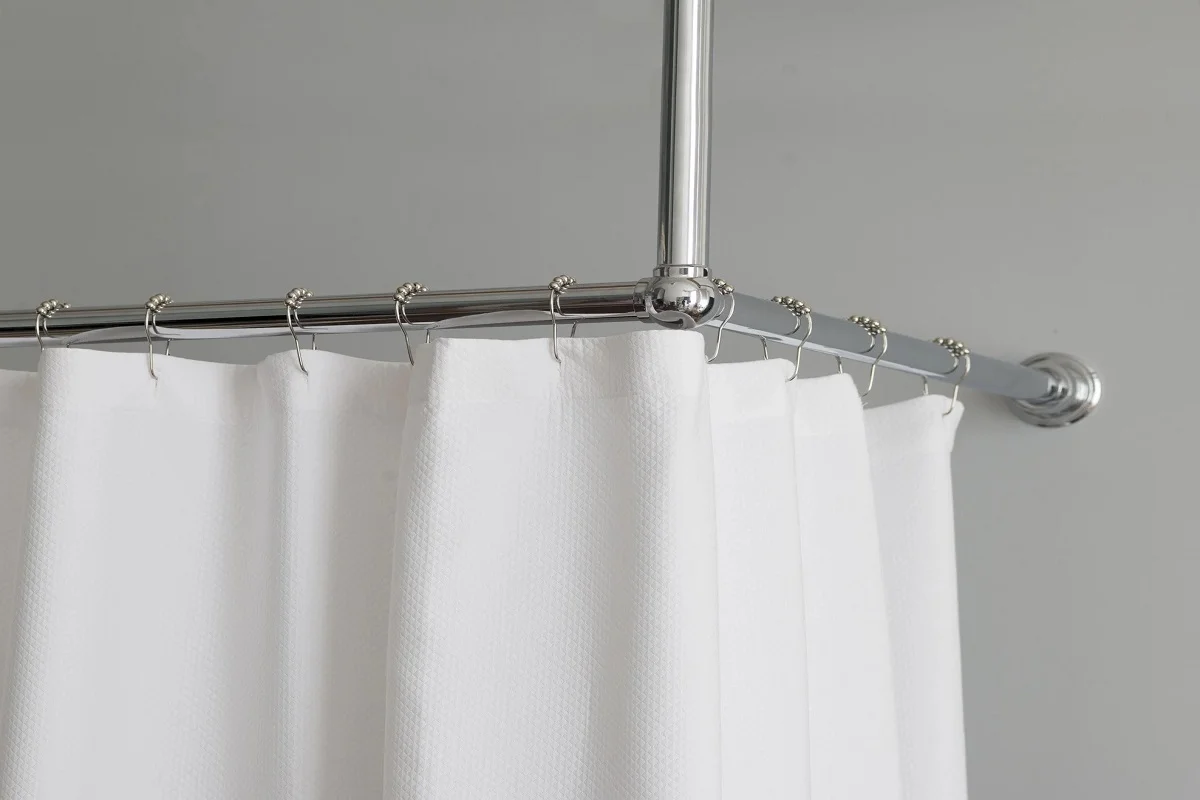Embarking on the journey of choosing the perfect curtain rails is akin to selecting the foundation for a piece of artwork—essential for both form and function in your living spaces. Curtain rails are the unsung heroes of window treatments, providing the support and structure that ensure your curtains hang gracefully. However, the world of curtain rails is not one-size-fits-all; it’s a diverse landscape with various types tailored to different needs and styles.
In this exploration, “Choosing the Right Track: Exploring Curtain Rail Types for Every Space,” we delve into the intricacies of curtain rails, dissecting the options available to homeowners seeking the ideal combination of aesthetic appeal and practicality. Whether you’re aiming for a minimalist, modern look, or prefer a classic and ornate touch, the curtain rail you choose can significantly impact the overall ambiance of a room.
Join us on this journey through the diverse realm of curtain rails, where we’ll unravel the nuances of different types, materials, and designs. By the end of this guide, you’ll be equipped with the knowledge to make an informed decision, ensuring that the curtain rails you select not only enhance the beauty of your windows but also harmonise seamlessly with the unique character of each space in your home. Let’s navigate the world of curtain rails together, discovering the perfect tracks to set the stage for your window treatments.
The Importance of curtain rails
Curtain rails, often overshadowed by the allure of luxurious fabrics and stylish patterns, play a fundamental role in the world of interior design. These seemingly inconspicuous fixtures are the unsung heroes that provide structure and support to window treatments, elevating both their aesthetic appeal and functionality. The importance of curtain rails extends beyond mere practicality; they contribute significantly to the overall ambiance and efficiency of a living space. Here are key reasons highlighting the importance of curtain rails:
Structural Support:
- Functionality: Curtain rails form the backbone of window treatments, providing a stable and reliable structure for curtains and drapes.
- Smooth Operation: Well-installed curtain rails ensure the smooth opening and closing of curtains, allowing for easy control over natural light and privacy.
Aesthetic Enhancement:
- Style Integration: The right curtain rails enhance the overall aesthetic of a room, seamlessly integrating with the chosen window treatments and complementing the interior design.
- Customization: Curtain rails offer a platform for personalization, with various designs, materials, and finishes available to align with diverse styles.
Versatility in Design:
- Adaptability: Different types of curtain rails cater to various window treatment styles, from standard curtain rods for a classic look to track systems for a modern and sleek appearance.
- Innovative Options: Advancements in curtain rail design include motorised systems for added convenience and smart solutions that integrate with home automation.
Control over Light and Privacy:
- Efficient Light Management: Well-chosen curtain rails facilitate the effective use of curtains in controlling natural light levels, contributing to the ambiance of a room.
- Enhanced Privacy: Properly installed curtain rails ensure that curtains can be fully closed, providing a sense of privacy and security.
Durability and Longevity:
- Stability: Quality curtain rails contribute to the longevity of window treatments by providing a stable and secure foundation.
- Resistance to Wear: Durable materials and finishes in curtain rails ensure resistance to wear and tear over time.
Ease of Maintenance:
- Simple Cleaning: Curtain rails are generally easy to clean, contributing to the overall maintenance of the window treatments.
- Reduced Wear on Curtains: Properly functioning curtain rails minimise friction and wear on curtains, extending their lifespan.
Enhanced Room Transformation:
- Visual Impact: Curtain rails, especially when chosen thoughtfully, can visually transform a room, making it appear more spacious, elegant, or cosy.
- Coordination with Décor Elements: Coordinating curtain rails with other décor elements, such as furniture or wall colour, contributes to a cohesive and polished look.
Different Spaces of Curtain Rails
Curtain rails are versatile elements that can be tailored to suit the unique requirements of different spaces within a home. The choice of curtain rails is not a one-size-fits-all decision; rather, it depends on factors such as the purpose of the space, the type of window treatment, and the overall design aesthetic. Here’s a breakdown of curtain rail considerations for different spaces:
Living Rooms:
- Statement Rails: Living rooms often benefit from curtain rails that make a visual impact. Decorative curtain poles with unique finials or track systems with sleek designs can serve as focal points in the room.
- Functional Elegance: Choose curtain rails that allow for easy opening and closing of curtains, providing flexibility in controlling natural light and privacy.
Bedrooms:
- Blackout Curtain Rails: For bedrooms, especially those where a dark and serene environment is desired, consider rails that accommodate blackout curtains. This ensures effective light control for a restful sleep.
- Soft Fabrics: opt for curtain rails that can support heavier and more luxurious fabrics, adding a touch of cosiness to the bedroom.
Kitchens and Bathrooms:
- Waterproof and Rust-Resistant Rails: In spaces with higher humidity levels, such as kitchens and bathrooms, it’s advisable to choose curtain rails that are resistant to water and rust. This ensures durability and longevity.
- Functional Design: Consider practicality with curtain rails that are easy to clean, as these areas may be more prone to splashes and spills.
Large Windows:
- Ceiling-Mounted Rails: For windows that stretch from floor to ceiling, ceiling-mounted curtain rails create a sense of height and elegance. They also allow curtains to hang gracefully without obstruction.
- Heavy-Duty Options: Large windows often require curtain rails that can support the weight of more substantial curtains. Consider sturdy materials and additional support for longer spans.
Children’s Rooms:
- Safety Features: In children’s rooms, prioritise safety. Opt for curtain rails with secure installation methods and avoid those with small, detachable parts that could pose a choking hazard.
- Playful Designs: Choose curtain rails that complement the playful theme of the room, perhaps with colourful or themed finials.
Home Offices:
- Light Control: In home offices, where natural light is crucial, consider curtain rails that allow for effective light management. This might include track systems with adjustable curtain positions.
- Professional Appearance: Choose curtain rails that contribute to a polished and professional atmosphere, aligning with the overall design of the workspace.
Multi-Functional Spaces:
- Versatile Curtain Rails: In spaces that serve multiple functions, such as a combined living-dining area, opt for versatile curtain rails that can accommodate different types of window treatments for various purposes.
- Coordinated Design: Ensure that the curtain rail design complements the decor elements of both areas, creating a harmonious transition.
Formal Dining Rooms:
- Ornate and Formal Designs: For formal dining spaces, consider curtain rails with ornate designs or decorative poles to add a touch of elegance. These can contribute to the refined ambiance during special occasions.
Transitional Spaces:
- Coordinated Designs: In transitional spaces like hallways or entryways, choose curtain rails that coordinate with the adjacent rooms. Consistency in design creates a seamless flow throughout the home.
DIY Curtain Rail Installation
Installing curtain rails can be a satisfying and cost-effective DIY project that adds a personal touch to your home décor. Whether you’re a seasoned DIY enthusiast or a first-time DIYer, here’s a step-by-step guide to help you with the installation of curtain rails:
Materials and Tools:
- Curtain Rails: Choose the appropriate type and length of curtain rails for your windows.
- Curtain Hooks or Rings: Depending on your curtain style, gather the necessary hooks or rings.
- Curtains: Have your curtains ready to hang once the rails are installed.
- Measuring Tape: Measure the width of your window to determine the length of the curtain rails needed.
- Pencil: Marking points for drilling and mounting.
- Level: Ensures that the rails are installed straight.
- Drill with Bits: Use a drill with the appropriate bit size for your wall type.
- Wall Anchors and Screws: Necessary for a secure installation.
- Screwdriver: To tighten screws.
Ladder or Step Stool: Depending on the height of your windows.
Measure and Mark
- Measure the width of your window. For standard installations, position the curtain rail brackets about 4 to 6 inches beyond each side of the window frame.
- Use a pencil to mark where the brackets will be placed. Ensure that the marks are level and at the same height on both sides of the window.
Mount Brackets
- Hold the curtain rail brackets against the marks on the wall.
- Use a level to ensure the brackets are straight.
- Mark the positions for drilling holes through the bracket holes.
- Drill pilot holes for the brackets using the appropriate bit size for your wall type (drywall, plaster, concrete, etc.).
- Insert wall anchors into the drilled holes.
- Position the brackets again and secure them in place by screwing them into the wall anchors.
Attach Curtain Rails
- Slide the curtain rails into the brackets.
- Ensure that the rails are evenly positioned and level.
- For curtain rail systems with multiple pieces, connect them according to the manufacturer’s instructions.
Attach Curtains
- If using curtain hooks, attach them to the curtains.
- Hang the curtains on the installed rail or slide curtain rings onto the rail.
Finishing Touches
- Adjust the curtains to your desired length.
- Double-check that the curtain rail is securely attached and level.
Maintenance and Care Curtain Rails
Regular Cleaning:
- Dust Removal: Dust and debris can accumulate on curtain rails over time. Regularly dust them using a soft cloth or a duster to prevent the build-up of dirt.
- Deep Cleaning: For a more thorough cleaning, use a damp cloth with a mild cleaning solution. Be sure to check the manufacturer’s recommendations for suitable cleaning agents.
Lubrication:
- Check for Smooth Movement: Periodically check the movement of your curtains. If you notice any difficulty in sliding or if the rails produce squeaking sounds, it may be time for lubrication.
- Silicone-Based Lubricant: Apply a small amount of silicone-based lubricant to the moving parts of the curtain rails. Avoid using oil-based lubricants as they may attract dust.
Tighten Loose Screws:
- Regular Inspections: Routinely inspect the brackets and screws holding the curtain rails in place.
- Tighten as Needed: If you notice any loose screws, use a screwdriver to tighten them. This ensures that the rails remain securely mounted.
Addressing Rust:
- Prevention: Choose curtain rails made from rust-resistant materials, especially for areas with high humidity, such as bathrooms or kitchens.
- Remove Surface Rust: If you notice any surface rust, gently scrub it away using a fine-grade steel wool or a rust eraser. Wipe the area clean and consider applying a rust-resistant primer.
Adjusting Length and Position:
- Check Alignment: Periodically check that the curtain rails are still level and aligned.
- Reposition if Needed: If the rails have shifted or become misaligned, reposition them to ensure a smooth operation.
Addressing Track Blockages:
- Inspect the Tracks: Check the tracks for any blockages or obstructions.
- Remove Debris: Use a vacuum cleaner or a soft brush to remove any dirt or debris that may be affecting the movement of the curtains.
Professional Maintenance:
- Annual Check-Up: Consider hiring a professional to conduct an annual check-up, especially for complex curtain rail systems.
- Repairs and Replacements: If any parts are damaged or if the curtain rails show signs of significant wear, arrange for prompt repairs or replacements.
Protecting Finishes:
- Avoid Harsh Cleaners: When cleaning curtain rails, avoid using harsh chemical cleaners that may damage the finishes.
- Use Mild Solutions: Stick to mild cleaning solutions, and test them on a small, inconspicuous area before applying them to the entire rail.
Conclusion
In conclusion, the care and maintenance of curtain rails are crucial aspects of preserving both their functionality and aesthetic appeal. These seemingly simple components, often overlooked in the grand scheme of home décor, play a pivotal role in the daily operation of window treatments. By implementing a regular maintenance routine, you not only extend the lifespan of your curtain rails but also ensure a seamless and visually pleasing experience each time you open or close your curtains.








